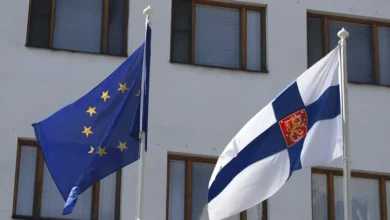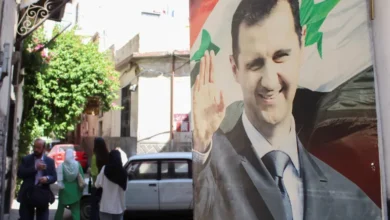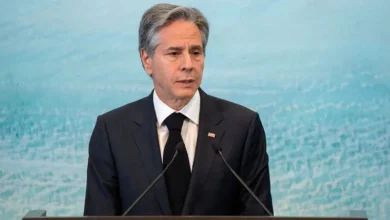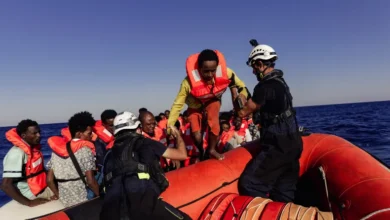The activists confronting period taboos in Pakistan

In November last year, I met Razia* at a rice mill in Thul, a little over an hour from Jacobabad city in Sindh province. An international aid agency was distributing care packages there among families from the district who had been affected by the floods that raged through the province in the summer of 2022. Razia, her head covered with a red dupatta with white embroidery along its border, had a small face, her eyes lined with kajal and a gold piercing hugged the curve of her nose. Its little gold beads shivered as she shook her head when I asked how old she was. She eventually guessed 25, but she looked younger. She had four children.
When the waters entered their village, many people left their homes and sought shelter on the nearest main road. They squatted there in makeshift tents or under the open sky as it continued to rain. I asked Razia about the days on the road. How had she managed with her children? She stared at me. I had asked a silly question.“My husband brought a plastic sheet and some sticks home and told me to make some sort of shelter for me and the children,” she said. “He did not let me leave our home.” She had to use the sheet to cover their heads as rain poured in through the thatched roof. The water entered their home. Still, they could not leave. Razia’s husband said there were too many men on the road, from their village and the ones around them. It was out of the question to go live among them, no walls separating the men and women. “Our men do not allow us to leave home like that,” Razia said.
The monsoon season last year, from June to September, saw record-breaking rainfall. August saw three times as much rainfall as the 30-year national average. Sindh and Balochistan provinces were the worst hit. Sindh, home to 50 million people, received eight times its average rainfall. More than 33 million people were affected by torrential rains and flash floods – that’s one in seven Pakistanis. The United Nations Secretary-General Antonio Guterres described it as a “monsoon on steroids”. “One-third of Pakistan is under water,” said the federal Minister for Climate Change Sherry Rehman at the time.
Pakistan needed help on an unprecedented level. The United Nations called for $816m in relief by October. In November, when I visited villages in Sindh and Balochistan, families were still crowded by the side of some main roads under worn tents bearing the names of aid organisations. As large local and international organisations, usually helmed by local male coordinators on the ground, assessed the needs of millions, others wondered about women like Razia. In September, an estimated 73,000 women were expected to give birth. They required birth attendants, newborn care and support, but many women were not allowed to leave their homes and were dependent on husbands or fathers to provide access to healthcare, or to travel with them to medical camps. And then there was the question of more basic needs: How were the 8.2 million women of reproductive age living in the flood-affected areas managing their menstrual needs? Who was considering this?
Mahwari Justice
In July, Anum Khalid, a 24-year-old architectural engineering student in Multan, a city in southern Punjab province, posted a message on Facebook asking for help in gathering relief supplies. “I asked for any donations or help with period products,” Anum recalled.
She shortly received a reply from Bushra Mahnoor, 22, a psychology student at a university in Lahore. The two had never met. “Let’s do this together,” Bushra wrote.










